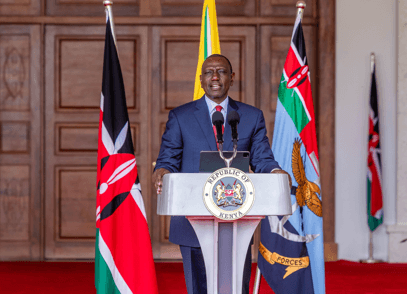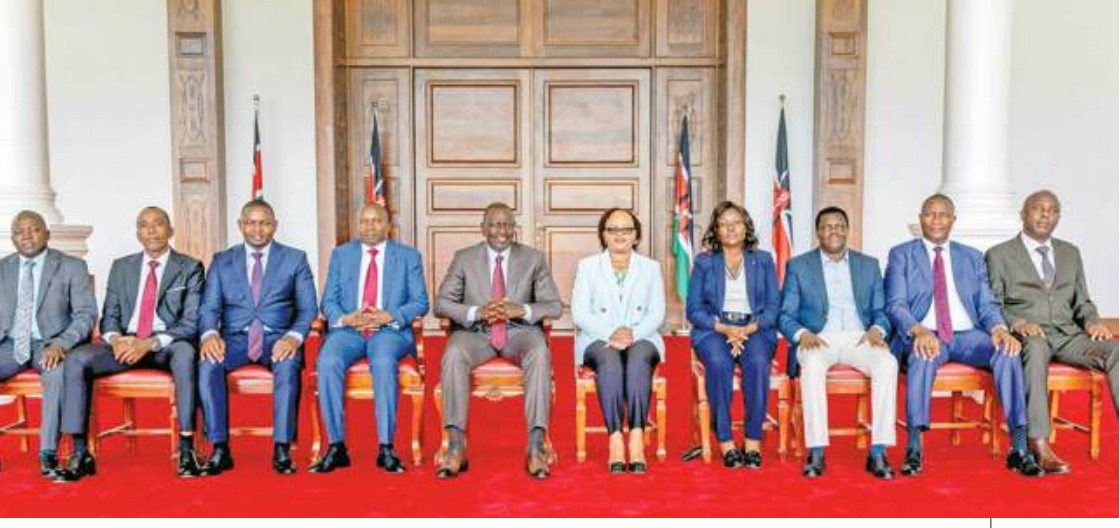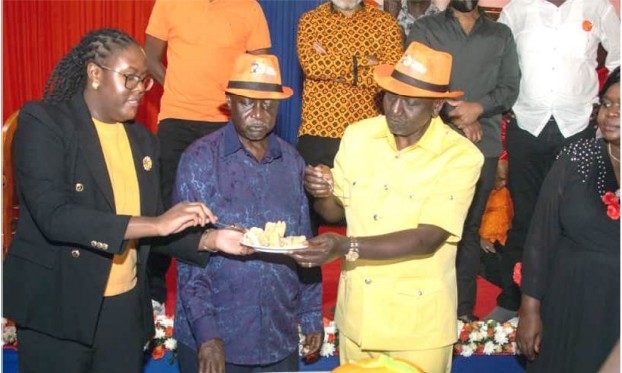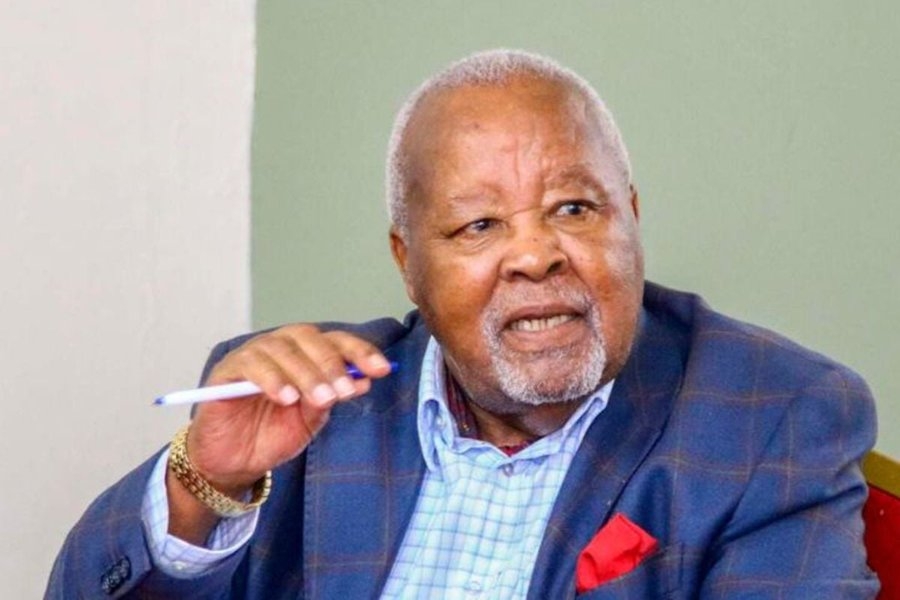The government has failed to contain the deadly conflict in Laikipia county because it Is using the wrong tactics for lack of strategy.
In what’s becoming a sad tale of botched incursions into the conflict, the government is now being blamed for sitting on its hands as the conflict ranged for generations, but also allegedly fanning the current conflict and violence by use of excessive blind force.
Hardly any community in this convoluted conflict has anything good to say about the government's involvement. They all blame it.
In a conflict that has engulfed Laikipia diverse ethnic communities — the Maasai, the Kikuyu, the Pokot, the Samburu, the Turkana, the Kisii, the Kalenjin, the Ameru and Europeans — internal and external to Laikipia, each blames government for one infringement or another.
Each is claiming rights and access to land but the government is unable to arbitrate, hence, the expected application of blind force.
In a worsening situation, Rumuruti county headquarters was the centre of ugly violence, which has now escalated from the drylands into urban centres.
Yet some idle leaders called for sterner government military deployment to resolve (not solve) a conflict that spans generations and requires less of more arms than ingenuity.
Government is having problems – or deliberately avoiding – proper definition of the conflict. It calls the ugly scenes in Laikipia the work of banditry. Looting, burning homes and schools cannot be the work of bandits. There is a revenge motive arising from ethnic animosity going on.
What is happening are ethnic clashes on a wider scale than assumed.
The protagonists are the Maasai, the Kikuyu, the Pokot, the Samburu, the Turkana, the Kisii, the Kalenjin, the Ameru and Europeans communities; the pastoralist herders versus the farmers and ranchers among them; and now government has joined them.
On the sidelines are bordering communities of almost the same mix from the neighbouring Samburu county to the North, Isiolo to the North East, Meru to the East, Nyeri to the South East, Nyandarua to the South, Nakuru to the South West and Baringo to the West.
In this mix, it isn’t easy to quickly apportion blame. There is much going on in the labyrinth of the mayhem. Pastoralist herders blamed for farm and ranch “invasions” that spanned the turmoil have their own story.
The National Drought Management Authority has designed the whole of Northeastern and its fringes that include all the neighbouring ASAL counties as undergoing biting drought, rendering man and animal emaciated and under death threat.
President Uhuru Kenyatta following the NDMA with a declaration of this drought as a national disaster, followed by release of Sh2 billion to mitigate the drought.
But it’s been several months without response since early warning sirens begun blowing from the North East – Mandera, Wajir, Garissa, Marsabit. If anyone was thinking about those counties, there is doubt anyone paid attention to the conflagration that Laikipia presents.
Today, the blame game continues but nobody will name the herders or farmers by their ethnicity. Yet the locals and local administration know exactly what would spark a fight among these communities during drought.
In “normal” times, it is apparent “grazing land leases” by the herders from farmers and ranchers is the done thing. It is, therefore, forgone that any infringement on this “right” would catalyse an inferno.
Herders claim ranchers’ favouritism in allocation of leases to grazing land. For instance, Maasai claim a home where they’re marginalised, ranchers give leases to distant Turkanas instead of them.
There are claims that herders lease grazing land, then invade, when leases are not honoured. This places the conflict squarely as one over grazing land and livestock raids experienced in raids that cut across all the communities than actual claims to land rights.
For instance, there would be flareups between the Samburu and the Maasai; the Samburu and the Pokot; and the Turkana who are often used by warring communities in their quest for better grazing land.
Livestock thefts as another source of conflict in Laikipia is bereft of clear evidence of blame as whenever a raid occurs, counter raids are undertaken to recover the stolen cows or to restock herds.
But the herders say one thing while the farmers and ranchers the other. What cannot be gainsaid is that no single death would cause this kind of flare-up, suddenly. There are underlying historical issues to contend with. The pastoralists among the communities claim Laikipia as their ancestral land they were alienated by the 1911 Agreement.
The farmers are settlers who claim to have bought land or settled by government genuinely. And then you have the ranchers – the Europeans - who claim original land settlement rights and political elite who grabbed ranches at the dawn of Independence and after. Ranches host wildlife in conservancies whose wildlife herders must kill to pave way for their livestock to graze. In this confusion, poachers also take advantage to kill.
Claims of people who want to inherit lapsed leases abound as much as the issue of competing ownership of sub-divided ranch lands that are being sold. The 15,00-acre ranch that DP William Ruto allegedly owns [and has denied ownership] adds to the mystery of land ownership in this land of savage beauty, Laikipia.
Farmers being mainly the Kisii and the Kikuyu are alleged to have sold land or allocated to farm as buffer zones against local herders.
Maasai claim, despite being the majority, they’re marginalised in their own land.
Laikipia county has a total population of 518,560 in an 8.696.1 km2 area. But the multi-ethnic claim doesn’t reveal itself in elected MP leaders.
Ali Amin Deddy Mohamed, a Somali, is MP Laikipia East, Patrick Kariuki, a Kikuyu, MP Laikipia West and Sarah Korere MP, a Maasai, MP Laikipia North.
The dominance of the Kikuyu is their holding the top county seats; Ndiritu Muriithi governor and replaced the first governor Joshua Irungu.
He is deputised by John Mathenge. John Kinyua is the senator and replaced the first senator Godfrey Kariuki.
Catherine Waruguru is the county MP.
And therein lies the catch and resolution: Clashes in Laikipia are all about ethnic identity, the claim to origin and land ownership.
The government can play watcher by pretending to be “solving” such a deep-seated emotional issue of identity but efforts will come to naught until it deploys other engaging means in conflict resolution.
It should address underlying regrets and feelings of historical dispossession and current land alienation in favour of the farming communities, by “native” communities’ resident in the eight counties of the war zone.
The shortcut is to repossess ranches whose leases have expired and appropriate them as grazing lands for the marginalised pastoralist communities. But will be to transfer aggression to inter-pastoralist skirmishes. Long term is to find drought mitigation that sustains pastoralism.
Ethnic animosity arising out of a strong sense of ethnic identity can destroy a country as former Yugoslavia.













![[PHOTOS] Three dead, 15 injured in Mombasa Rd crash](/_next/image?url=https%3A%2F%2Fcdn.radioafrica.digital%2Fimage%2F2025%2F11%2Fa5ff4cf9-c4a2-4fd2-b64c-6cabbbf63010.jpeg&w=3840&q=100)

